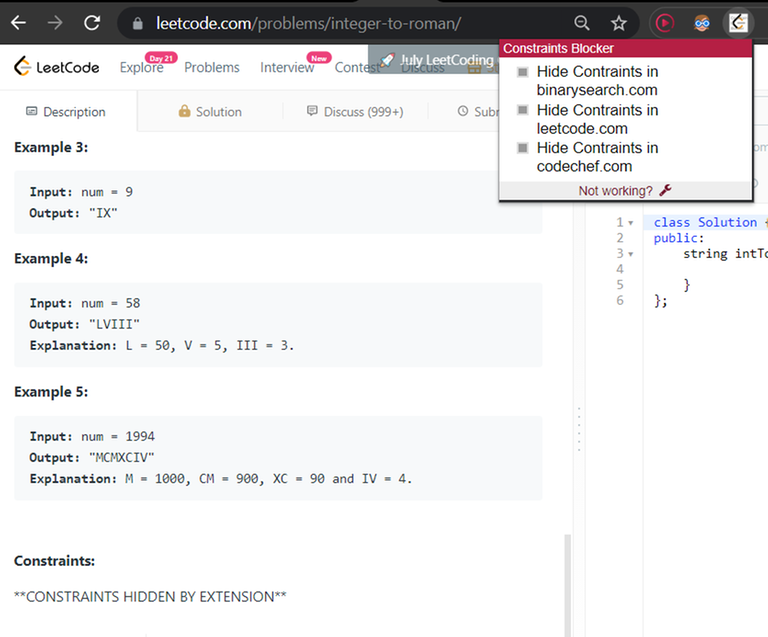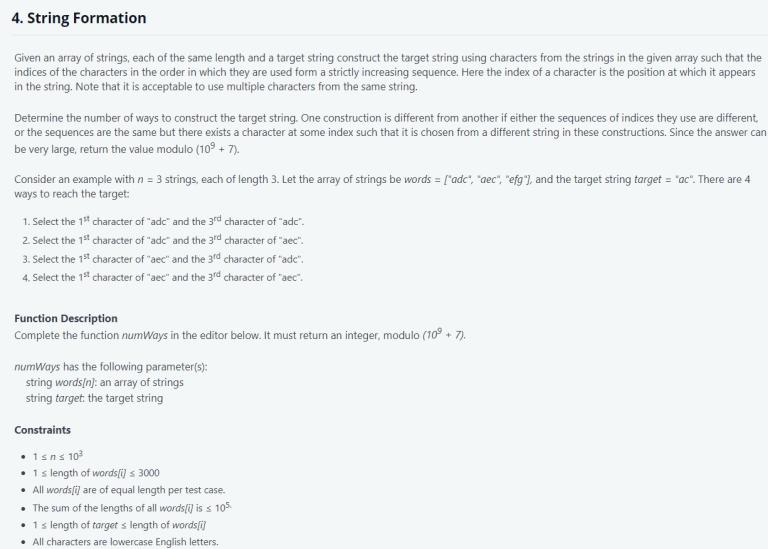Hi Everyone, I built a chrome extension that will hide the constraints of the problem shown in coding platforms as constraints reveal major hints to solve the given problem.
This helps to simulate real interview experience practice as in an interview you won't be revealed the constraints. The constraints give major hints of how to solve the problem. For example, if n<=20 then it's obvious the problem will be solved using some brute-force approach.
I will later add more features like support for other online judges hide difficulty, test cases etc. Just let me know how is this extension working or are there any bugs.
Note: As this is an open-source project, you can help add new features and resolve bugs.
Link: https://chrome.google.com/webstore/detail/constraints-blocker/poadlijigkkehhbfnmdabgecngbmoaho
Code: https://github.com/sumantopal07/Constraints-Blocker-Chrome-Extension
Supported Platforms:
- Leetcode
- Binarysearch
- Codechef
Demo:










 ` My question : How to approach and solve this problem? I feel like there are many ways to approach this problems but did'nt had time left to solve this.
` My question : How to approach and solve this problem? I feel like there are many ways to approach this problems but did'nt had time left to solve this.
